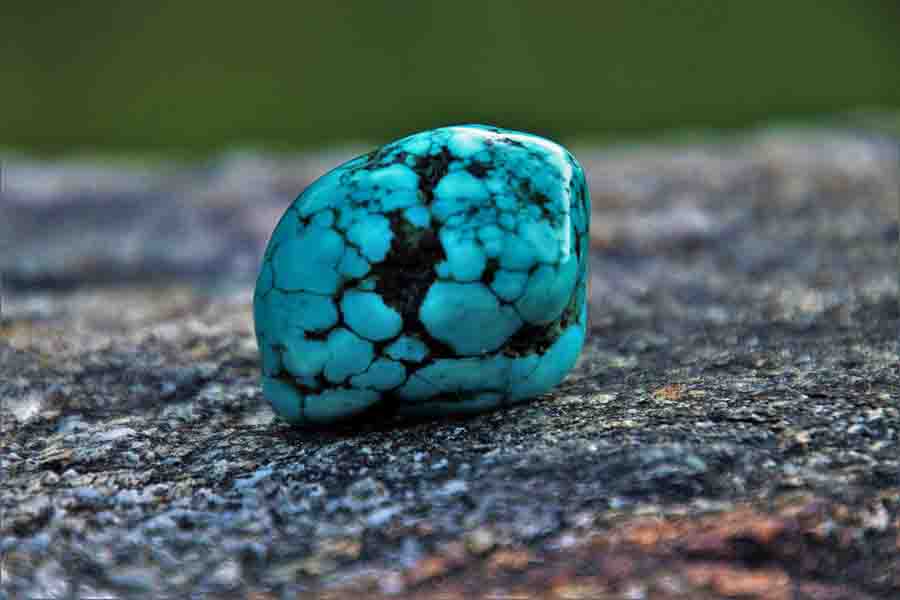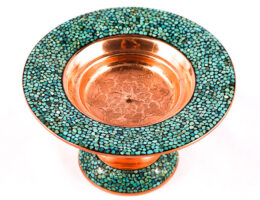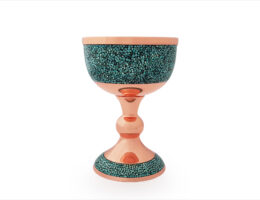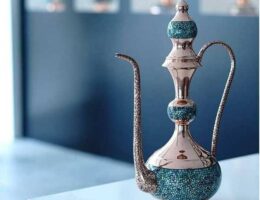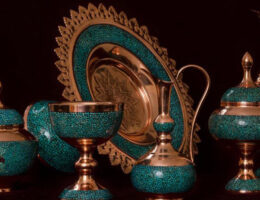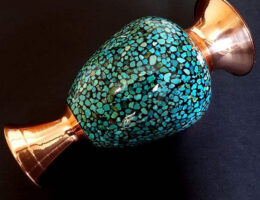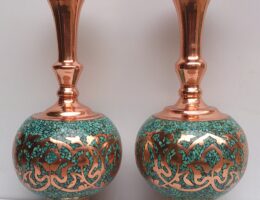IRAN ART EXHIBITION: TURQUOISE MINES IN IRAN & ITS TYPES
Turquoise of stunning beauty has been mined in Iran (formerly known as Persia) for over 5000 years. Although Iranian production accounts for just a small proportion of the world’s total output, its turquoise still sets the standard for quality.
In Iran, turquoise is called “Ferozah,” which translated means “victory.” It is Iran’s national gemstone.
It is believed that the first specimens of turquoise to which the Europeans were exposed probably came from Iran via trading posts in Turkey. One must wonder, if the Europeans who gave this gemstone its name new of its true origin, would you be reading the Persquoise Guide?
The best of Iranian turquoise is rich blue, with less matrix than most turquoise mined elsewhere. It is also distinguished by white patches. Turquoise is never a hard mineral, but Iranian turquoise is usually harder than turquoise mined in other locations. Today, only the turquoise coming from the Southwest U.S. comes close to Iranian turquoise in color richness and beauty.
The Persians classified turquoise into three quality groups:
Angushtari. This is first quality, suitable for the finest jewelry. These stones had the rich blue “Persian turquoise” color with little marking or matrix.
Barkhaneh. This is second-quality turquoise, much like Angushtari but with more markings and matrix.
Arabi. These stones were considered third-rate due to a pale blue or green shade or unwanted speckles. (Spots in Persian turquoise tend to be white, not black.)
Turquoise is commercially mined in Iran in just one location: a section of the Ali-mersai mountain range, outside of the city of Mashhad. Mashhad is the capital of the Khorasan province.
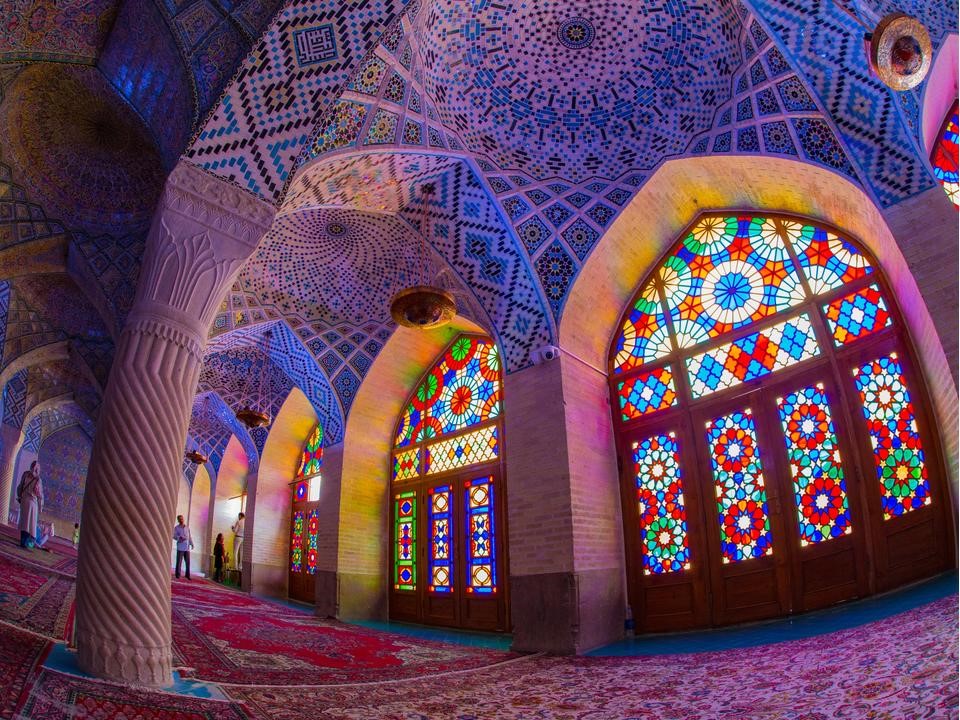
THE HISTORY OF TURQUOISE IN IRAN
Persia’s historical Khorasan region was the traditional source of Turquoise for many of the travelling salesmen in Central Asia and Europe at the time .It was from this trade, in fact, that the gemstone received its very name; the trade route into Europe passed through Turkey and the Old French name for anything Turkish was turquoise, which evolved to become the name we know it by today. Salesmen travelled across Central Asia as far wide as China to bring the stone to those who longed for its protective qualities. Central Asia, which was largely Iranian in pre-Islamic days, was heralded as the world’s primary supply of beautiful Turquoise stones – luckily, the supply was plentiful enough to meet the demand!
IRAN ART EXHIBITION: Iran played a significant role in the trading that occurred along the famous Silk Road that connected the East with the West. The Turquoise mines there are known to have been heavily worked since at least the 10th century to meet the demands of the surrounding regions. Intriguingly, there is some evidence to suggest that Iran’s supplies were discovered around 2100 BC, but this hasn’t been proven. What was known as Persian Turquoise enjoyed a reputation the world over for the smoothness of its robin’s egg blue veneer.
It often displayed colour variations from blue to green between mines in the Central Asian region, but one of the key differences between the Persian variety and the Turquoise found in the mines of the USA and Egypt, for instance, was that it lacked the intensity of the matrix of brown veins in its final cuts. The iron- and vanadium-rich environment in which the mineral can be found in Iran is what prevents the formation of these veins and this is noticeably lacking in other world regions.
The paler, greener stones that had heavy veining on their surface were referred to by the Persians as Arabi, which means they didn’t meet the high standards they’d come to expect from the Turquoise gemstones of their homeland. Two other classifications of Turquoise denoted the quality of the superior stones; those with medium quality and a bluer hue were called Barkhaneh, whilst the finest stones of all were known as Anqushtari. These variations were found in a number of mines all across the Persian region and it’s a tradition that still continues in the 21st century.
